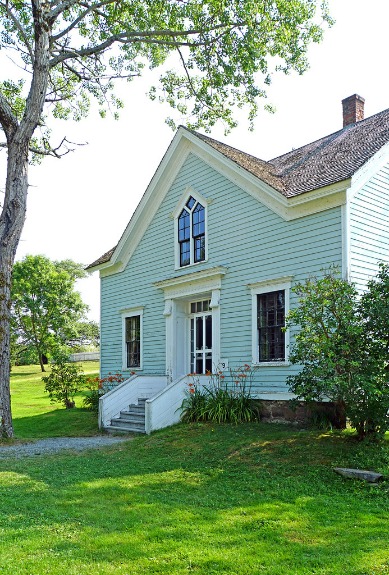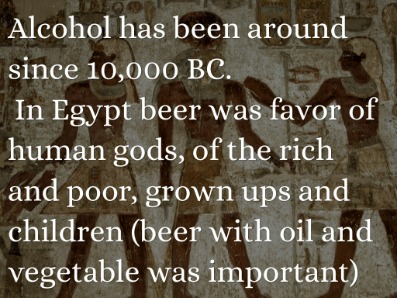Therefore, knowing when this ability developed could help researchers figure out when these human ancestors began moving to life on the ground, as opposed to mostly in trees, as earlier human ancestors had lived. Of the 38 men who had been stably abstinent at age 47, the vast majority remained abstinent at age 60; only 4 men relapsed and 1 man returned to controlled drinking. The participants predominantly came from lower social classes and attained an average of only 11 years of education. In addition, the Core City subjects had a variety of ethnic backgrounds, and 61 percent of their parents were immigrants. Several different methodological approaches can be used for investigating alcoholism and its characteristics, including cross-sectional and longitudinal studies. Cross-sectional studies examine large numbers of subjects of various ages and social backgrounds representative of the general population.
- Tiswin, or niwai is a mild, fermented, ceremonial beverage produced by various cultures living in the region encompassing the southwestern United States and northern Mexico.
- Italian standards of respectable limits for drinking are lower than those of the French, and the Italians typically regard getting drunk with disdain, while the French look on it with good humour or even, in men, as a mark of virility.
- The ability to break down alcohol likely helped human ancestors make the most out of rotting, fermented fruit that fell onto the forest floor, the researchers said.
- When Rorabaugh writes “three and a half gallons of alcohol,” he’s talking about 3.5 gallons of pure ethanol, rather than gallons of a specific spirit.
- A cult grew around the belief that wine could be used in rituals to return to a more innocent, aware state.
Swedish beer consumption may have been 40 times higher than in modern Sweden. English sailors received a ration of a gallon of beer per day, while soldiers received two-thirds of a gallon. In Denmark, the usual consumption of beer appears to have been a gallon per day for adult laborers and sailors. It is important to note that modern beer is much stronger than the beers of the past. While current beers are 3–5% alcohol, the beer drunk in the historical past was generally 1% or so.
A Brief History Of Alcoholism
Rush theorized that alcoholics could be kept away from society in these houses until such time they could regulate their own behavior and resume their place in the world. This article examines how various drinking establishments figured in the delineation of social boundaries within Mexico City’s urban space in the long nineteenth century. Moreover, this article shows how various social actors, including proprietors and customers of popular drinking places, reacted to and negotiated with the increasing regulation of Mexico City’s social space in the nineteenth century. These differences may be attributed, at least in part, to variations in the cultural attitudes toward alcohol consumption (e.g., Heath 1975; Greely and McReady 1980).However, in Mahabharata, the characters are not portrayed in such a black-white contrast. The nineteenth century brought a change in attitudes and the temperance movement began promoting the moderate use of alcohol—which ultimately became a push for total prohibition. In India, an alcoholic beverage called sura, distilled from rice, was in use between 3000 and 2000 B.C. AA has evolved beyond its origins as a movement exclusively based on Christian principles, offering programs with secular and agnostic replacements for much of the faith-based language in the 12 Steps . Non-Christian models espouse concepts of personal self and identity, some of them borrowing fromBuddhist teachings that echo similar beliefs. The effects of Rush’sInquirywere quickly felt in an American society where drinking was still commonplace among the upper class and where the sentiments of the1791 Whiskey Rebellion still ran strong.Massachusetts also had a rum distillery, started in 1657 in Boston. This would soon become New England’s most prosperous industry and give rise to smuggling activities along the coast, as alcohol production was taxed in the colonies.

600 AD, the Prophet Muhammed ordered his adherents to refrain from drinking alcohol. The scientists noted that the timing of this mutation coincided with a shift to a terrestrial lifestyle.
See How People Have Imagined Life On Mars Through History
He told his story to Dr. Bob Smith, a member of the Oxford Group who had his own problems with drinking. Wilson’s explanation of the spiritual aspect to his recovery and his belief that addiction was a disease of the mind appealed to Smith who applied the concepts to his own recovery. Smith had his last drink on June 10, 1935, a date that is remembered asthe “birth” of Alcoholics Anonymous. Native Americans coming together to help members of their tribe kick drinking habits was thefirst timethere had been a form of organized substance abuse treatment in America. In the United States, the roots of alcohol abuse go back to the days of colonialism.However, without a gene called ADH4, the alcohol would have caused illness. Scientists believe that a gene mutation in the ADH4 gene created an enzyme that enables monkeys and humans to digest ethanol up to 40 times faster than before. Without the ability to speed up ethanol digestion, we would get very sick after any alcohol consumption. Join us Oct. 19 to learn how to use evidence-based principles to help clients identify and manage depression and other mental health disorders.
Thank Alcohol For Agriculture
Brewing dates from the beginning of civilization in ancient Egypt, and alcoholic beverages were very important at that time. Egyptian brewing began in the city of Hierakonpolis around 3400 BC; its ruins contain the remains of the world’s oldest brewery, which was capable of producing up to three hundred gallons per day of beer. Symbolic of this is the fact that while many gods were local or familial, Osiris was worshiped throughout the entire country. Osiris was believed to be the god of the dead, of life, of vegetable regeneration, and of wine. By the time the Europeans reached the Americas in the 15th century, several native civilizations had developed alcoholic beverages. According to a post-conquest Aztec document, consumption of the local “wine” was generally restricted to religious ceremonies but was freely allowed to those who were older than 70 years.In time, other fluids—milk, honey, and later wine —were substituted. That alcoholic beverages should have displaced other fluids in early religions, both as offering and drink, is not surprising. The capacity of alcohol to help the shaman or priest and other participants reach a desired state of ecstasy or frenzy could not long have escaped observation, and its powers were naturally attributed to supernatural spirits and gods. The red wine in religious uses was eventually perceived as symbolizing the blood of life and, in this spiritual sense, ultimately passed into the Christian Eucharist. There are ample indications that some people so loved drink and were so abandoned to drunkenness that they must be presumed to have been alcoholics. In summary, the analyses of the College and Core City samples found that both cultural and genetic factors can predispose a person to alcoholism, whereas childhood environment per se plays a much less significant role.

Some herb-based beverages may have been used for medicinal purposes as well. Drinking accompanied secular and religious holidays, as well as the celebrations of births, baptisms, marriages, and funerals; women, however, were expected to drink very moderately. Similar drinking patterns were reported from various areas in Bolivia and Peru. In the 1990s alcohol consumption declined in most of the developed countries but increased in many developing countries.Only in a small number of towns and villages in southern Peru and Bolivia is it still prepared. Other traditional drinks made from fermented maize or maize flour include pozol and pox. The Hindu Ayurvedic texts describe both the beneficent uses of alcoholic beverages and the consequences of intoxication and alcoholic diseases. Ayurvedic texts concluded that alcohol was a medicine if consumed in moderation, but a poison if consumed in excess. Most of the people in India and China, have continued, throughout, to ferment a portion of their crops and nourish themselves with the alcoholic product.

We’ve helped thousands of people overcome their addiction issues, and we’d like to help you to do the same. You’ll be connected to an admissions counselor who will be glad to discuss your options and get the process started. The human body and mind have been at war with alcohol for thousands of years, and families, employers and the community have paid the price along with the individual. One only needs to find an effective rehab—immediately—before any more damage is done. That is where Narconon comes in with its program of withdrawal, detox and life skills to arm the individual against relapse. Through the Narconon program, addiction to alcohol can be a thing of the past, with the individual provided tools to get back on their feet and capable of creating a stable, sober life.
Alcohol And Gambling Enforcement
One such change was the belief that drunkenness as a form of celebrating was wrong. Even so, public drinking establishments became important town meeting places, where workers could catch up on the news, gossip, and play games. The aristocracy increasingly drank brandies , and champagne was introduced as a luxury beverage, as were various cordials and liqueurs. Brewing and wine making grew into major businesses as technology and quality controls improved.Let’s take a look at the historical roots of alcohol, as well as the history of society’s attempts to control alcohol consumption and treat those who drink to excess. In the 1600s, drunkenness became a widespread problem in England, with both beer and wine commonly abused. When religious groups fled to America in the next century, many formed temperance societies in the new country. In Christian writings during the time of Jesus’s life, drunkenness was criticized but alcohol consumption was recommended for medical purposes and not forbidden for other purposes.Today, an estimated 15 million Americans suffer from alcoholism and 40% of all car accident deaths in the US involve alcohol. The editorial staff of River Oaks Treatment is comprised of addiction content experts from American Addiction Centers. Our editors and medical reviewers have over a decade of cumulative experience in medical content editing and have reviewed… The patient, Rowland Hazard III, joined a Christian evangelical movement known as the Oxford Group, which advocated the basic Christian philosophies of practicing charity, purity, honesty, and love as a way of achieving personal transformation. Once this transformation was achieved, it was incumbent upon members of the Oxford Group to spread the word, a form of “personal evangelism,” especially to people outside the group who were in need of such transformations in their own lives. The physician should, nonetheless, perform a brief mental status exam to help guide the referral process. Basic elements that should be covered in the mental status exam include an assessment of mood, perceptual problems such as hallucinations, and a safety screen.
